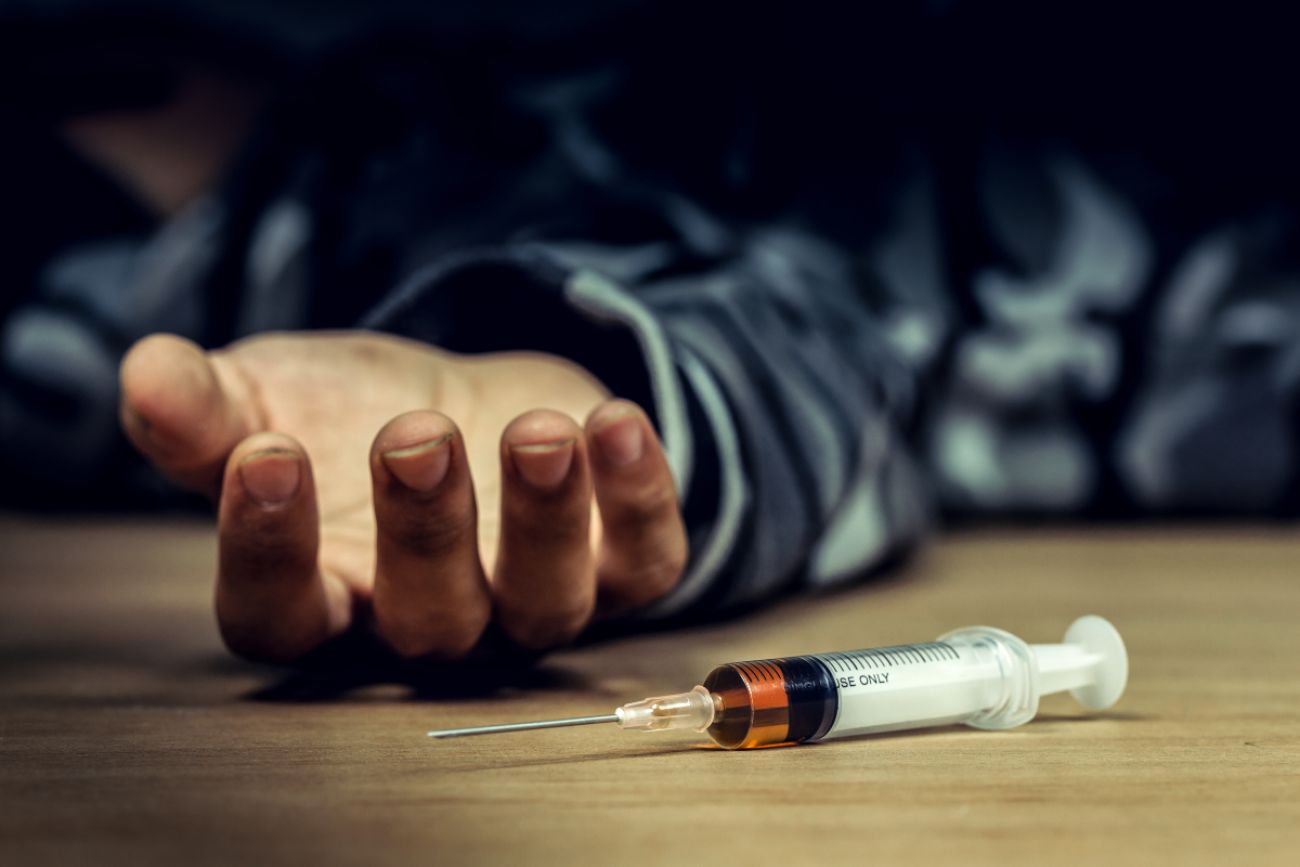Drug deaths drop in Michigan as task force weighs how to spend opioid funds

- Drug deaths fell more than 3% in Michigan last year, mirroring the national drop, according to data released Wednesday
- Still, nearly 3,000 people died in Michigan, alone — a grim reminder that the drug epidemic is far from over
- Also on Wednesday, the Michigan Opioids Task Force met to lay out spending recommendations for 2025
LANSING — Overdoses claimed slightly fewer Michiganders in 2023 than the prior year, according to data released Wednesday by the U.S. Centers for Disease Control and Prevention.
That's possibly because users are becoming more aware of the presence of fentanyl and other additives in street drugs and taking action to reduce their risk, Elaine Dougherty, who oversees drug testing of seized drugs at the Michigan State Police laboratory, told the Michigan Opioids Task Force Wednesday.
The task force’s regular meeting coincided with the CDC’s data release as members considered spending priorities for 2025. Those funds would come from Michigan's estimated $1.6 billion share of national opioid settlement funds — dollars that are stretched over 18 years and throughout the state.
“Almost everything on the streets right now contains fentanyl,” Dougherty told the task force.
Public education campaigns can help, she said. With the knowledge of additives such as fentanyl and xylazine increasingly being detected in the street drug supply, more users now turn to fentanyl test strips, for example, to check drugs before using them. They also might use lesser amounts to start, Doughtery told Bridge in an interview after the meeting.
RELATED STORIES:
- There’s a proven way to help kick opioids. Not enough in Michigan use it
- Meth makes a comeback in Michigan, even as drug fight focuses on opioids
- Fighting Michigan's opioid crisis with new needles, purer drugs, respect for addicts
- In drug-ravaged northern Michigan, there’s money for help. But few counselors
Overdoses killed 2,931 Michiganders last year, a drop of about 3.2% from 2022, when overdoses killed 3,027 people in Michigan, according to the new CDC data.
Michigan’s decrease mirrors the national drop that the CDC’s chief medical officer, Dr. Deb Houry, called “heartening news.”
But changes in other states varied widely. Nebraska had a 24.7% drop in deaths, though the numbers were smaller — from 168 to 223 — but four other states had increases of more than 25%: Alaska, Oregon, Nebraska and Washington.
Also Wednesday, Michigan’s Opioids Task Force members laid out spending recommendations for the 2025 fiscal year. Each of four priority areas were assigned to subcommittees to study: prevention, treatment, harm reduction and recovery.\
Among the expenditures and policy shifts recommended by the task force’s four subcommittees:
- For treatment: The state should make medication-assisted treatment — which uses drugs like methadone to help people recover from opioid dependence — the standard of care for all people with substance use disorder, offering that approach as a first step to recovery rather than abstinence-based treatment. (As Bridge recently reported, the state has too few providers and some Michiganders have to travel long distances for medications such as suboxone to help them stay sober.)
- For prevention: The state should pay for more training for people who work with youth to understand adverse childhood experiences, or ACEs — traumatic events that can lead to substance abuse.
- For recovery: The state should set aside at least $25 million for housing tailored for those in recovery, and it should invest in transportation services to help people in recovery.
- For harm reduction: The state should:
- Ensure better medical care for people whose drug use causes health complications, like severe tissue breakdown from xylazine use.
- Work to decriminalize drug test strips and other harm-reduction supplies. (The Legislature is considering two bills that would provide protection for syringe exchange programs and decriminalize drug testing strips.)
- Expand drug-checking services and drug reversal drugs — naloxone — in Ypsilanti, Flint, Detroit and Grand Rapids.
Dr. Natasha Bagdasarian, the state’s chief medical executive and co-chair of the task force, has long advocated making naloxone — also known by the brand name Narcan — ubiquitous throughout the state, much like fire extinguishers. The drug had reversed 6,600 overdoses, her staff told lawmakers last fall.
Naloxone reverses overdoses by attaching to receptors in the brain and reversing the effects of opioids, restoring a person’s breathing.
Bagdasarian reiterated its importance Wednesday as task force members discussed spending priorities.
“On my wish list: I want people to know naloxone is a thing. I want everyone to have it,” she said.
She also urged the committees to consider health equity and the disproportionate impact of drugs on communities of color. The drop in drug deaths, she said, has been fueled by a lower rate among white residents.
The task force’s recommendations will be used during budget discussions this year.
See what new members are saying about why they donated to Bridge Michigan:
- “In order for this information to be accurate and unbiased it must be underwritten by its readers, not by special interests.” - Larry S.
- “Not many other media sources report on the topics Bridge does.” - Susan B.
- “Your journalism is outstanding and rare these days.” - Mark S.
If you want to ensure the future of nonpartisan, nonprofit Michigan journalism, please become a member today. You, too, will be asked why you donated and maybe we'll feature your quote next time!








